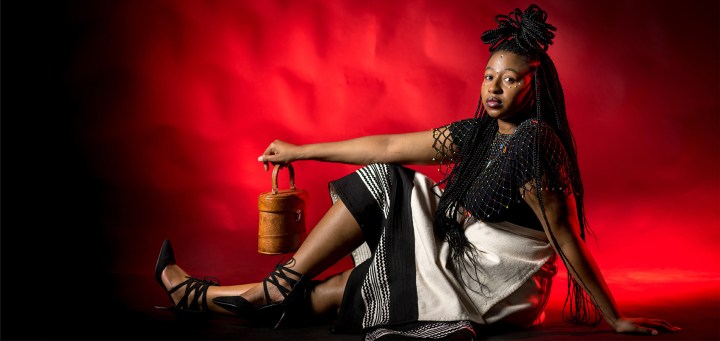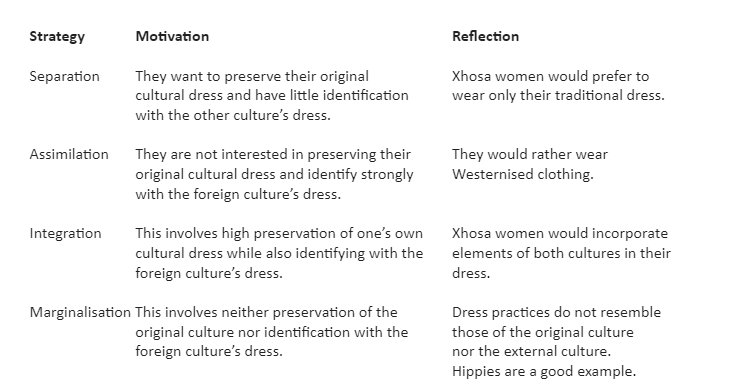SPONSORED CONTENT
Dress to express

If clothing is a form of self-expression, how do you keep your cultural identity alive in an increasingly globalised retail landscape?
The world is a mosaic of cultures, given an increasingly homogenous form through the lens of social media. So if you are what you wear, and what you wear is mostly shaped by Western standards, how do you retain a fragment of your ethnicity?
A study conducted by the University of Pretoria’s Department of Consumer and Food Sciences explored this dilemma and the role of acculturation in Xhosa women’s beauty ideals and everyday dress practices.
“As a proud Xhosa woman, I noticed that if I wanted to dress in a way that reflected my culture, I would have to have an item custom-made,” says master’s student Zandile Zamela. “This inspired me to investigate how other Xhosa women felt about the lack of representation in retail fashion.”
The research was conducted during the COVID-19 pandemic, which prompted an online quantitative survey. Three provinces were targeted: the Eastern Cape, as the home of the Xhosa people; the Western Cape, where a large population of Xhosas reside; and Gauteng, as the economic hub of South Africa.
“These areas are where 91% of Xhosa women can be found,” Zamela says.
This was supplemented by a TikTok social media account, which drew from a wider pool of Xhosa female participants.
Culture meets trends
When asked how often these Xhosa women wore six different items that form part of traditional wear, less than 20% of the responses were “never”. This revealed that more than 80% of respondents have worn the items at some point, demonstrating that the material culture was not disappearing. However, a majority (67%) of the responses to how often they wore the different clothing items were “seldom” or “sometimes”.
“Items such as the traditional apron (incebetha), shawl (ixakatho) or skirt (umbhaco) in particular are not practical for modern lifestyles or are reserved for special cultural occasions,” Zamela explains.
A very high percentage (80%) agreed with the statement “I would buy clothing that combines the latest trends with Xhosa cultural clothing”, indicating a desire for clothes that combined traditional Xhosa elements with fashionable items. The majority (91%) disagreed with the statement “I would not buy Xhosa clothing even if it were available in-store”.
“If we can integrate the bold colours, geometric patterns and striking beadwork of Xhosa dress into Westernised styles that are more practical for the modern woman, we can keep our cultural heritage alive,” Zamela says.
Acculturation strategies – mixing it up or keeping it separate
The Xhosa tribe itself is a result of acculturation, and over time, this cultural group has interacted with various cultures, like the Khoi, the Southern Sotho and German settlers.
“Today, Xhosa people are in contact with a broader Western culture through their exposure to ‘remote acculturation’, made possible through the media, social media and technology,” Zamela says.
Western culture has a significant influence on fashion trends and beauty ideals. Consequently, exposure to Western culture may have led to Xhosa women using some form of acculturation strategy, which could have caused a gradual disappearance of Xhosa traditional dress practices in their daily lives. This could lead to a loss of cultural heritage.
“Awareness of a potential loss of culture is often the first step toward feasible solutions,” senior lecturer Dr Bertha Jacobs says. “This study may lead to better documentation of the current dress practices of Xhosa women, in particular, the aspects of Xhosa and Western clothing that appeal to them and are incorporated into their everyday dress. When shared, this study can help retailers cater to the clothing needs of Xhosa consumers by incorporating elements of their cultural dress into modern clothing/fashion, thus contributing to the preservation of cultural heritage.”
Luxury brand Maxhosa Africa has cottoned on to the value of Xhosa aesthetics. Its founder, Laduma Ngxokolo, wanted to create modern Xhosa-inspired knitwear for Xhosa initiates (amakrwala). He uses traditional Xhosa beadwork patterns, symbolism and colours as the source of inspiration for the knitwear.
“This can serve as a South African example of how elements of Xhosa culture are incorporated into fashion,” Dr Jacobs says.
A sense of inclusion
The research team feels it is essential to keep track of the dress heritage of South Africa’s indigenous cultures and, where possible, protect and preserve it. Their efforts have unearthed a gap in the market and they will be exploring whether different ethnic groups feel the same way as their Xhosa group.
“We would like to give all women a sense of belonging in the beauty and fashion industry,” Dr Hanri Taljaard-Swart says. “Such studies can create awareness of material cultural heritages, and prompt retailers and designers to provide a sense of inclusion for all women, thereby assisting with the cultural heritage goals of the Sustainable Development Goals.”
How is this research transdisciplinary?
Clothing and fashion are often thought of as merely aesthetical, but this study looks at clothing as interlinked with other disciplines. The research extends across social sciences (such as consumer behaviour, cultural dress, anthropology and the social psychology of clothing), humanities (linking to cultural heritage and African ethnography) and business (relating to marketing and retail aspects).
The acculturation dress code
Acculturation is the interaction between cultural groups and the changes that occur as a result of this interaction. Because of this cultural intermingling, people adapt how they dress and adopt different strategies:
Acculturation is the interaction between cultural groups and the changes that occur as a result of this interaction. Because of this cultural intermingling, people adapt how they dress and adopt different strategies:
 DM
DM
















